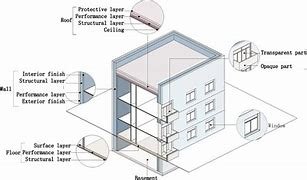Last Updated on March 21, 2024 by Saira Farman
“Home Improvement” is a term that can be interpreted in many ways. Some people may think of home renovations, while others may have an entirely different idea of what it means to “improve their home.” The word “home” also has several meanings – one person’s home could be another person’s castle! Whatever the definition, some general principles apply to any renovation or repair project. This blog post will discuss retrofitting and how it can work within the scope of your next home improvement project.
Table of Contents
What is Retrofitting?
Retrofitting can be defined as making changes to an existing structure meant to improve its energy efficiency. These modifications could include everything from installing new insulation, windows, or doors in your home – even adding a solar panel system on the roof! A soft story retrofit in Los Angeles is performed by contractors who specialize in this kind of work, but there are some things you can do yourself if you have the time and expertise. For example, air sealing your house will reduce drafts around window sills or electrical outlets using caulk or other sealants. This process should only take about 30 minutes for each room, depending on how drafty it might be.
The Most Common Types of Retrofits
The most common retrofit projects used to upgrade homes are insulation and air sealing, window replacement or installation of energy-efficient windows (or even solar panels on the roof), and attic fans. Retrofits are often performed as part of a home improvement project because they can save you money in heating costs over time.
Professionals do most Retrofits
Although homeowners can do some retrofitting projects, most are performed by professionals who have the materials and expertise to do a quality job. This makes sense as many of these improvements require cutting into walls or ceilings to access attics or crawlspaces where insulation might need to be installed. Usually, it doesn’t make financial sense for a homeowner with no experience in this type of work to purchase all of the tools needed for a successful project – especially when there may not even be enough room for them at their own home!
Other Ways Homeowners Can Save Energy Costs
Retrofits should only form part of your overall plan towards energy efficiency because they won’t solve every problem you might face while living in your space. There are other ways you can save energy costs, such as reducing the temperature on your heating and cooling systems. This may not be possible if there is no thermostat or central control unit to regulate this for multiple rooms at once. However, some newer homes do have these zoning controls, which allow homeowners more flexibility in changing their climate settings. Installing LED light bulbs will also help reduce your electricity bill because they use less wattage than traditional incandescent lighting options.
Finally, solar panels are a great way to generate renewable power that doesn’t contribute greenhouse gases into our atmosphere! Although home improvement projects should focus primarily on saving money through retrofits, switching to renewables later might make sense depending on where you live. Some places offer tax credits for renewable energy installations, which can help bring the cost down.
The modern home is as vastly different from the homes of yesteryear as a new car is to an old junker. If you’re interested in taking your house into the future with all the latest upgrades but don’t want to break out your wallet and go for a full-blown renovation project, there’s another option: retrofitting. Retrofitting can be done on any size or style of building and may include adding insulation, upgrading windows and doors, installing solar panels, updating electrical fixtures and appliances–the list goes on!



























